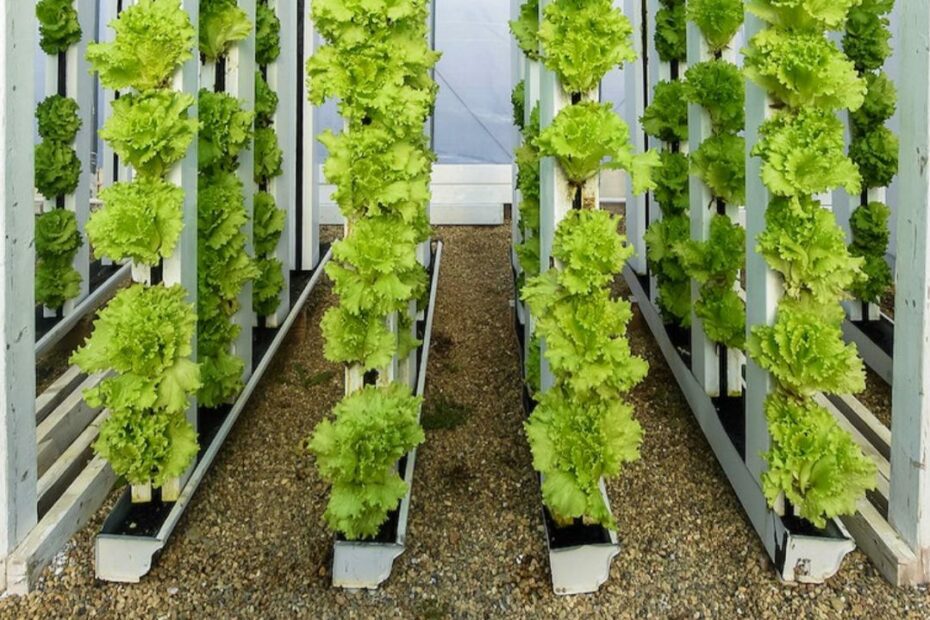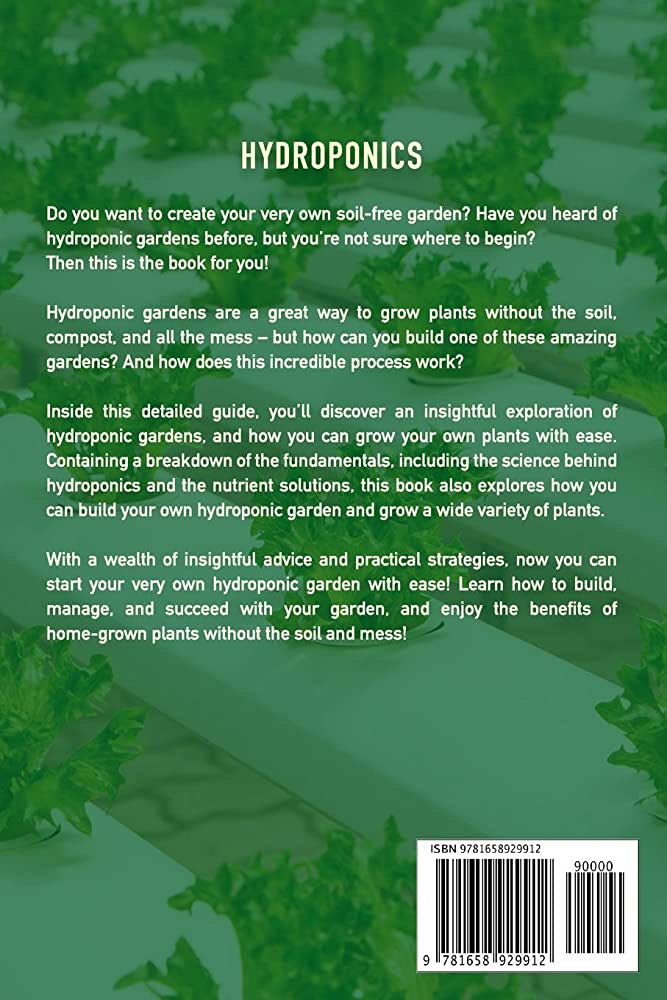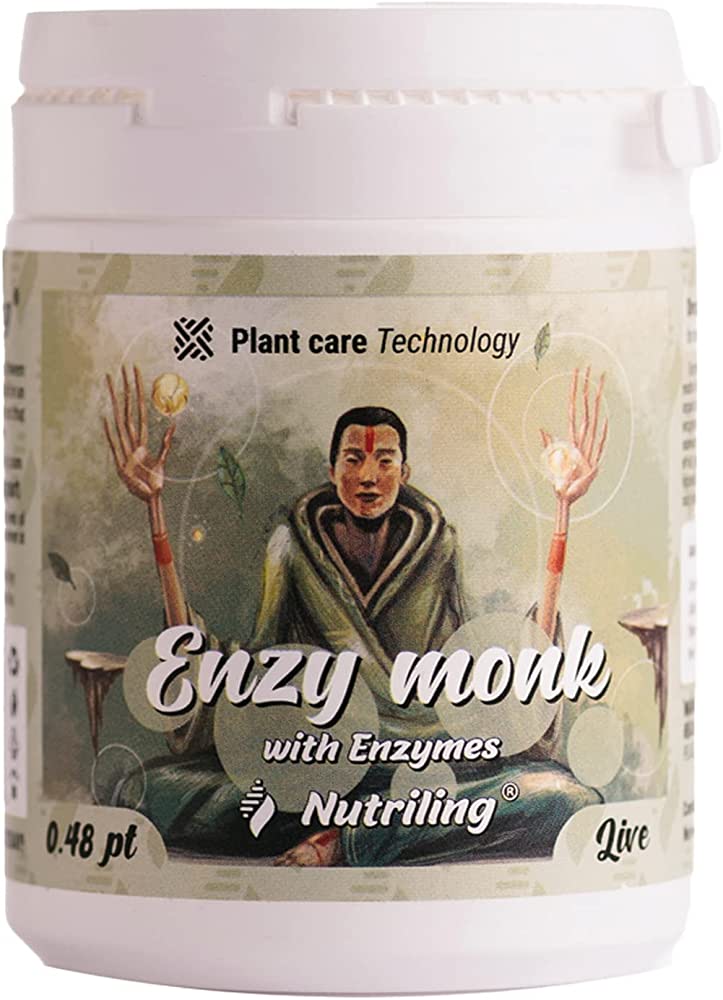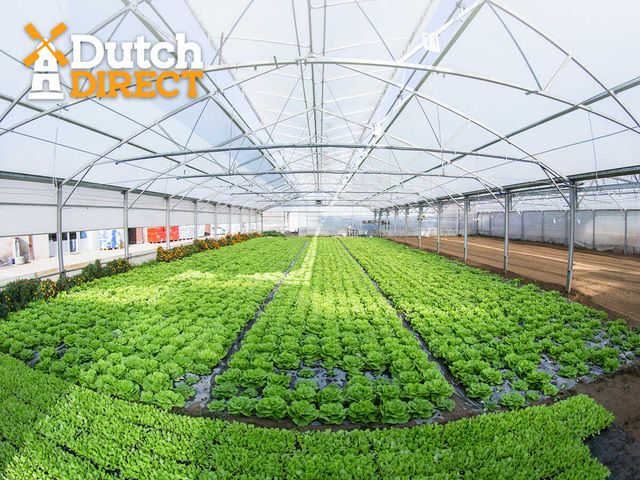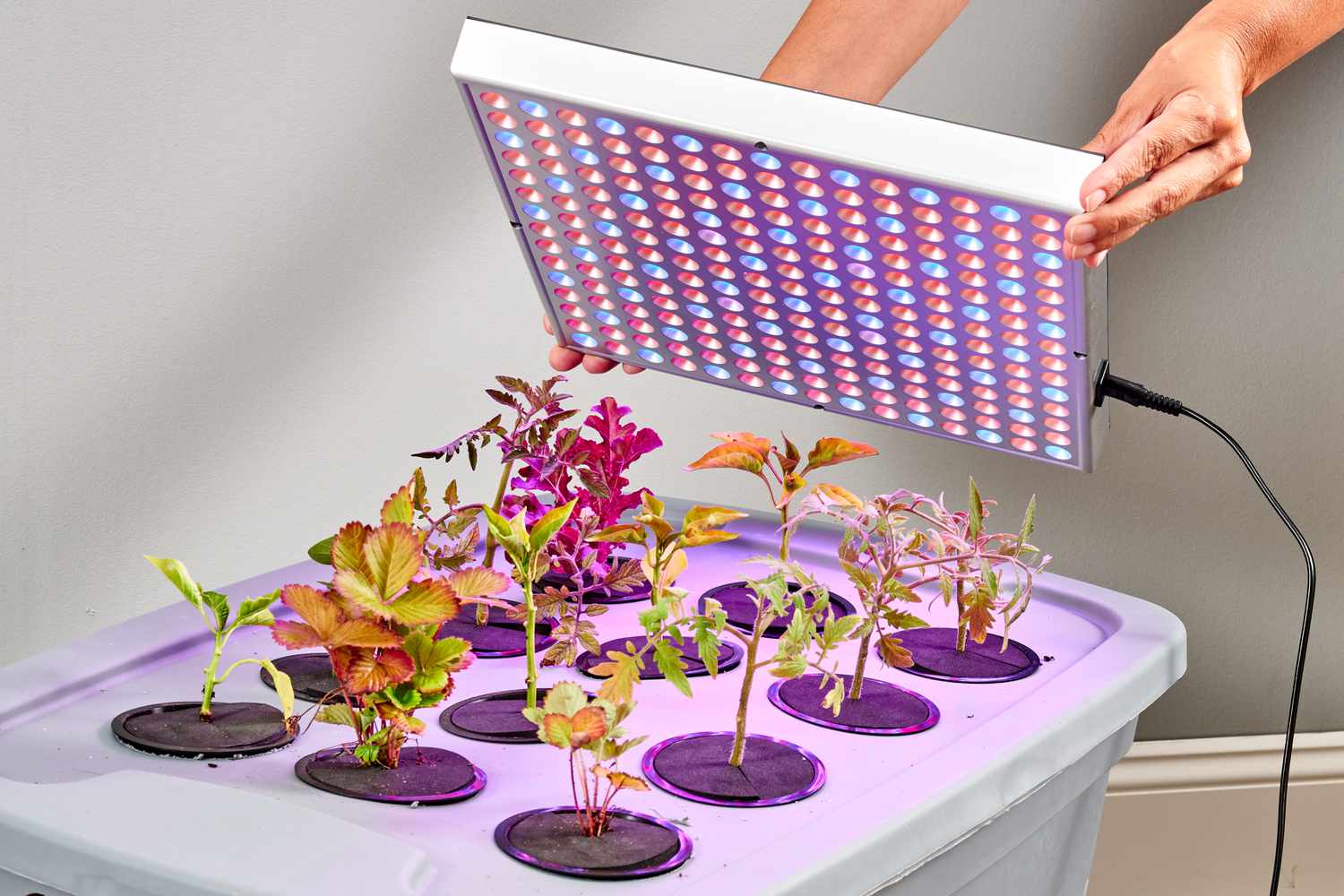Fish farming can be done using hydroponic gardening through the method of aquaponics. In this practice, fish produce waste that is converted into nutrients for plants, which in turn filter and clean the water for the fish.
This sustainable method of farming allows for efficient use of space, water, and resources, making it an attractive option for those interested in sustainable agriculture. With aquaponics, it is also possible to grow a variety of crops and fish species, making it a flexible and customizable method of farming.
In this guide, we will explore the basics of aquaponics and how to set up your own system for fish farming and gardening.

Credit: fluence.science
Understanding Aquaponics And Hydroponics
Defining Aquaponics And Hydroponics
Aquaponics and hydroponics are two distinct and innovative ways of growing plants and farming fish. They both utilize technology to improve gardening and farming practices. Let’s take a look at their definitions:
- Aquaponics is a combination of aquaculture and hydroponics that involves cultivating fish and plants in one system. Aquaponics uses fish to create nutrient-rich water for plants to grow, and in turn, the plants clean the water for the fish to live in. It’s a self-sustaining ecosystem.
- Hydroponics involves growing plants in nutrient-rich water, without soil. Hydroponics uses pumps and electronic controls to deliver a precise amount of water and nutrients to the roots of plants.
Understanding The Benefits Of Aquaponics And Hydroponics
There are several benefits to using aquaponics and hydroponics that make them desirable practices for gardening and farming:
- Increased efficiency: Both techniques use less water than traditional gardening and farming methods. Aquaponics and hydroponics also save space because they don’t need soil.
- Improved yields: Growing crops using hydronic or aquaponic methods can result in higher yields than traditional farming methods.
- Reduced need for fertilizers: The nutrient-rich water used in both techniques decreases the need for synthetic fertilizers.
- Lower environmental impact: Using these techniques can significantly reduce the carbon footprint of farming and gardening practices.
- Suitable for any location: Aquaponics and hydroponics can be used both indoors and outdoors, making it ideal for urban areas or locations with harsh climatic conditions.
How Fish Farming Can Be Improved Using Aquaponics And Hydroponics
The farming of fish has been revolutionized by aquaponics and hydroponics by simplifying the process and improving production. There are multiple ways to enhance fish farming using these techniques, some of which include:
- Providing more room: Fish have more room to live and thrive since aquaponics and hydroponics are used to clean their water.
- Better water quality: Clean water is vital for healthy fish growth and high production, and these techniques ensure the water is the optimal quality.
- Capable of running all year long: Aquaponics and hydroponics systems are not weather-dependent. It means they can be run all year long, providing more growth cycles per year.
- Sustainable practices: The combination of an aquaponic system provides a sustainable ecosystem that increases the production of both plants and fish without the need for any chemical fertilizers.
Aquaponics and hydroponics are innovative ways that have transformed farming and gardening practices. They are sustainable, environmentally friendly and can be used to grow crops and fish anywhere, making them essential techniques for modern-day farming.
Key Factors In Maximizing Yield
Fish farming with hydroponic gardening, or aquaponics, is a sustainable and efficient method of growing fish and plants in a closed-loop system. However, to achieve maximum yield requires an understanding of the key factors that contribute to success. In this section, we’ll discuss the essential elements of crop production, the best varieties of fish and plants to use, and how to maintain optimal water conditions.
Understanding The Basics Of Crop Production
When it comes to crop production in an aquaponic system, there are a few key points to keep in mind:
- Plants play a crucial role in the system by consuming the fish waste and returning clean water to the fish. Therefore, it’s essential to select crops that are compatible with the system’s nutrient inputs and water chemistry.
- Root vegetables tend to be more challenging to grow in aquaponics because they need more space and can clog the system’s media. Instead, leafy greens like lettuce, herbs, and tomatoes tend to be highly successful in hydroponic and aquaponic systems.
- In some cases, it may be necessary to supplement the system’s nutrients with additional inputs like worm castings or fish emulsion. It’s essential to monitor the system’s chemistry and adjust inputs as needed to maintain optimal conditions for the plants and fish.
Identifying The Best Fish And Plant Varieties For Aquaponics And Hydroponics
The success of an aquaponic or hydroponic system depends largely on the types of fish and plants chosen for the system. Here are some key factors to consider:
- Fish: Species like tilapia, catfish, and trout tend to thrive in aquaponic systems. It’s important to choose fish that are hardy, adaptable to fluctuating water conditions, and can tolerate high stocking densities.
- Plants: Fast-growing leafy greens like lettuce, arugula, and spinach are ideal for aquaponics and hydroponics. Herbs like basil and parsley also tend to do well in these systems. It’s best to avoid plants that require a lot of space or heavy fruiting crops like peppers or cucumbers.
Maintaining Optimal Water Conditions For Fish And Plants
The water in an aquaponic system is the lifeblood of the entire operation. These are the main factors for maintaining optimal water conditions:
- Ph: The ideal ph range for an aquaponic system is 6.8 to 7.0. Any fluctuations outside of this range can be harmful to the fish and plants.
- Ammonia and nitrite: These two compounds are the byproducts of fish waste and can be toxic to the system’s inhabitants. It’s important to monitor ammonia and nitrite levels and maintain them at non-toxic levels through regular water testing.
- Dissolved oxygen: Fish need oxygen to survive, so maintaining high dissolved oxygen levels is crucial. The use of aeration devices like air stones or diffusers can help increase oxygen levels and improve the overall health of the system.
Maximizing yield in an aquaponic system requires careful attention to the basic principles of crop production, careful selection of fish and plant varieties, and consistent monitoring and adjustment of water conditions. By following these guidelines, you can create a thriving and sustainable aquaponic or hydroponic system that yields healthy fish and plants year-round.
Setting Up An Aquaponics System
Fish Farming With Hydroponic Gardening: A Guide To Aquaponics
Aquaponics is a sustainable food production system that combines hydroponic gardening with fish farming. With an aquaponics system, you can grow vegetables and fish in one integrated, self-sustaining ecosystem. Setting up an aquaponics system may seem complicated, but with the right guidance and components, it’s achievable for anyone.
Identifying A Suitable Location For An Aquaponics System
Before setting up an aquaponics system, you need to find a suitable location for it. Here are some factors to consider:
- A location with access to electricity and water
- An area with enough space for the setup
- A secure location that is safe from pests and animals
- The availability of natural light
Selecting The Right Components For An Aquaponics System
Selecting the right components is crucial for the success of your aquaponics system. Here are the main components that you need for a basic system:
- Fish tank or pond
- Grow bed
- Water pump
- Air pump
- Plumbing system
- Water filter
- Grow medium
- Plants
- Fish
Constructing An Aquaponics System
Once you have identified a suitable location and selected the right components, it’s time to construct your aquaponics system. Here is an overview of the construction process:
- Start by building the fish tank or pond. Make sure it’s the right size for the number and type of fish you plan to raise.
- Set up the grow bed and fill it with the selected grow medium such as gravel, clay pebbles, or expanded shale.
- Place the water pump in the fish tank or pond and connect it to tubing that runs to the grow bed. This will transport water from the fish tank to the grow bed.
- Connect an air pump to an airstone in the fish tank or pond to oxygenate the water.
- Install a plumbing system that connects the grow bed to the fish tank. This allows for continuous water circulation.
- Install a water filter at the end of the plumbing to remove solid waste and debris from the water.
- Add plants to the grow bed. Select plants that are suitable for an aquaponics setup, such as lettuce, basil, and mint.
- Add fish to the fish tank. Tilapia, trout, and catfish are common choices for aquaponics.
- Monitor the water chemistry, temperature, and ph levels to ensure the health of both the plants and fish.
By following these steps, you can create a functional aquaponics system that provides fresh produce and fish, while avoiding the use of harsh chemicals and pollutants.
Aquaponics is an innovative and sustainable food production system that has gained popularity around the world. With some basic guidelines, anyone can set up an aquaponics system in their backyard or balcony. So, why not give it a try and enjoy the benefits of fresh produce and fish on your plate?
Integrating Fish Farming And Crop Production
Understanding The Symbiotic Relationship Between Fish And Plants
Aquaponics gardening is a sustainable method of farming that involves the cultivation of plants and fish in a controlled environment. One of the most critical aspects of aquaponics is the relationship between fish and plants. In this symbiotic relationship, the fish produce waste, which is then broken down by bacteria and converted into nutrients that the plants can absorb.
As a result, the plants act as a natural filter, cleaning the water for the fish and helping to maintain a healthy environment for both.
Identifying The Best Fish Species For Aquaponics Farming
Choosing the right type of fish is essential for any aquaponics system. Some of the most popular fish species for aquaponics farming include:
- Tilapia: Tilapia is a hardy and fast-growing fish that is suitable for aquaponics farming in a wide range of environments. They are also a good source of protein and can withstand fluctuations in water temperature.
- Trout: Trout is another popular fish species for aquaponics farming. They prefer cooler water temperatures and grow well in tanks. They are also a good source of protein and omega-3 fatty acids.
- Catfish: Catfish is a hardy species that can grow in warm, stagnant water. They are an excellent source of protein and have a mild, sweet taste.
Integrating Crop Production With Fish Farming In Aquaponics Gardening
Integrating crop production with fish farming is a crucial aspect of aquaponics gardening. Here are some key points to consider when integrating crop production with fish farming:
- Select plants that are compatible with the type of fish you are growing. Different fish species have different nutrient requirements, and certain plants may not thrive in their waste.
- Consider the appropriate depth and medium for planting. While some plants can grow in water, such as watercress or lettuce, others thrive in a soil or hydroponic system.
- Monitor nutrient levels closely to ensure that plants receive adequate nutrients and ph levels remain in a safe range.
- Remember to maintain a balanced system by monitoring fish health, oxygen levels, and water quality.
By following these guidelines, aquaponics gardening can be a highly productive and sustainable method of farming. With the right fish species and crop selection, you can create a thriving ecosystem that benefits both the fish and plants.
Maintaining Optimal Conditions For Aquaponics
Fish farming with hydroponic gardening is a modern, sustainable, and efficient farming practice that combines hydroponics and aquaculture. Aquaponics is an innovative technology that uses fish waste as a nutrient for growing plants, which absorb the waste and provide fresh and clean water for the fish to live in.
Maintaining optimal conditions for aquaponics is essential for the health and growth of both fish and plants.
Monitoring And Maintaining Water Quality In Aquaponics Systems
Aquaponics is a closed-loop ecosystem that relies on the balance between fish waste, plants, and water chemistry. Monitoring the water quality is crucial to ensure that the system is running smoothly and efficiently. Here are a few key points to keep in mind:
- Testing the water weekly is recommended to maintain proper ph, ammonia, nitrite, and nitrate levels.
- The ideal ph range for aquaponics is between 6.8 and 7.2 since fish and plants thrive in a slightly acidic environment.
- Ammonia levels should be kept below 0.5 mg/l since high levels of ammonia are toxic to both fish and plants.
- Nitrite levels should be kept below 1.0 mg/l since high levels of nitrite are also toxic to fish.
- Nitrate levels can accumulate quickly, and water changes may be needed to prevent them from exceeding 80-100 mg/l.
Adjusting Ph, Temperature, And Dissolved Oxygen Levels In Aquaponics Systems
Maintaining optimal ph, temperature, and dissolved oxygen levels is essential for creating a healthy and productive aquaponics system. These parameters can affect the growth and health of fish and plants, and it is crucial to keep them within the right range.
Here are a few tips:
- Ph can be adjusted using organic materials such as vinegar or citric acid, or alkaline materials such as calcium carbonate or potassium hydroxide.
- The ideal temperature range for aquaponics is between 20-30 °c since it has been found to be the optimal range for both fish and plants.
- Dissolved oxygen levels should be maintained above 5.0 mg/l for optimal fish health. Adding an air stone or increasing water flow can help increase the dissolved oxygen levels in the system.
Maintaining optimal conditions for aquaponics is not only essential for the health and growth of fish and plants, but it is also crucial for maximizing yields and ensuring a sustainable and efficient farming practice. By monitoring water quality and adjusting ph, temperature, and dissolved oxygen levels, aquaponic farmers can create a thriving ecosystem that produces healthy and nourishing food while minimizing waste and environmental impact.
Setting Up A Hydroponics System
Fish farming has gained immense popularity over the years due to the rise in demand for fish and other aquatic animals, making it a lucrative business. One of the efficient ways of fish farming is through the aquaponics system. This method combines hydroponics, or soilless gardening, with aquaculture, or fish farming.
Hydroponics systems use water to deliver nutrients to the plants. In return, the plants filter and purify the water that goes back into the fish tank. If you’re interested in setting up a hydroponics system for fish farming, this guide is for you!
Identifying A Suitable Location For A Hydroponics System
Before setting up the hydroponics system, you need to choose an appropriate location. Here are a few things to consider:
- The system requires ample sunshine, so choose a location that receives a minimum of six hours of direct sunlight.
- The location should be sheltered from extreme weather conditions, such as strong winds and hailstorms.
- It’s essential to have a source of electricity nearby, since many hydroponics systems require pumps and other electronic components.
- Effective drainage is crucial to maintain a healthy environment. Therefore, choose a location where you can quickly get rid of excess water.
Selecting The Right Components For A Hydroponics System
Selecting the right equipment and components is critical when setting up a hydroponics system. Here are the essential components:
- Fish tank and hydroponic plant bed
- Air pump and diffusers for oxygenation of the fish tank
- Water pump for circulating the water
- Grow media for the hydroponics bed, such as coconut coir, perlite, or peat moss
- Aquaponic food elements, including fish food, ph adjuster, and trace minerals
Constructing A Hydroponics System
Once you’ve identified the suitable location and gathered the necessary components, it’s time to construct your hydroponics system.
- First, install the fish tank and the other components, such as the water pump, air pump, and diffusers.
- Next, place the plant bed above the fish tank. You can use plastic, wood, or metal to construct the plant bed, depending on your preference.
- Fill the hydroponic bed with grow media. Make sure it provides adequate support for the plants and drains away excess water.
- The last step is to add fish to the tank and start the hydroponics system. Monitor the water temperature, ph levels, and nutrient levels to ensure that the plants and fish remain healthy.
Setting up a hydroponics system requires careful consideration of the location and the right selection of components. With this guide, you now have a better understanding of how to construct a hydroponics system for fish farming. Happy farming!
Choosing The Right Crop Variety
Identifying The Best Plant Varieties For Hydroponics Farming
Hydroponics is a popular farming method that requires no soil. When choosing the right crops to grow in hydroponics, it’s important to consider a variety of factors. Here are some key points to consider:
- Consider the plant’s growth habit: Some varieties, such as vining plants, may not work well in hydroponics systems.
- Look for plants that are suited to high-yield production: Plants that aren’t finicky or unstable are better suited for hydroponics farming than those that may require a lot of attention and care.
- Choose plant varieties that can adapt easily to hydroponic growing environments: Lettuce, basil, and bok choy are commonly used in hydroponics farming due to their versatility.
Understanding The Factors That Affect Crop Production In Hydroponics Gardening
While hydroponics farming offers a lot of benefits, it’s essential to understand the factors that can affect crop production. Here are some factors to consider:
- Nutrient deficiency or excess: It’s crucial to maintain an ideal balance of nutrients in the water used for hydroponics.
- Ph balance: The acidity of the growing medium can impact plant growth and nutrient uptake. Testing and balancing the ph is essential for optimal crop production.
- Water and air temperatures: Both water and air temperatures can have an impact on the growth of plants. Ideally, keep the water temperature between 65-85 °f and maintain good air circulation to ensure that the plants do not become too hot.
Ensuring Optimal Lighting And Temperature Conditions For Crop Production
The right lighting and temperature conditions can make all the difference in hydroponics farming. Here’s what to keep in mind:
- Lighting: Providing adequate light is crucial for the success of hydroponic gardens. Consider installing grow lights or positioning the garden in an area that gets plenty of natural light.
- Temperature control: Keep the temperature of the air and water at optimal levels to ensure good crop growth and prevent plants from wilting. It’s important to monitor and adjust the temperature regularly, especially in extreme climates.
- Airflow: Plants need good air circulation to grow and thrive. Consider installing fans for proper airflow and ventilation, as this can also help regulate the temperature of the growing area.
By understanding how to choose suitable plant varieties, the factors that can impact crop production, and how to optimize lighting and temperature conditions, you can successfully start your own hydroponics farm and produce a bountiful harvest.
Maintaining Optimal Conditions For Hydroponics
Fish farming with hydroponic gardening through aquaponics is a smart and sustainable way to grow plants and livestock. Hydroponics is a method of growing plants in water fortified with nutrients, while aquaponics utilize the combination of hydroponics and aquaculture to grow fish and plants together in a more integrated and complete system.
We will be focusing on the optimal conditions for hydroponics in aquaponics and how to maintain them.
Monitoring And Maintaining Nutrient Solution Levels In Hydroponics Systems
Keeping a consistent and balanced nutrient solution level is crucial for the health and growth of plants. Here are some key points on how to monitor and maintain nutrient solution levels in hydroponics systems:
- Regularly check the ph level of the nutrient solution to ensure it is within the recommended range for the type of plants and fish in the aquaponics system.
- Keep the electrical conductivity (ec) level in check to make sure it is neither too low nor too high.
- Adjust the nutrient solution based on the plant’s growth stage and fish’s needs.
- Avoid adding too much nutrients, which can harm both plants and fish.
Adjusting Ph, Temperature, And Humidity Levels In Hydroponics Systems
Aside from nutrient solution levels, ph, temperature, and humidity levels are also essential in creating optimal conditions for plants. These factors can influence the growth, yield, and health of plants, and maintaining the right balance is crucial. Here are some key points on how to adjust ph, temperature, and humidity levels in hydroponics systems:
- Regularly monitor and maintain the ph levels within the recommended range to keep the nutrient solution balanced.
- Keep the temperature within the preferred range for both fish and plants to ensure optimal growth and avoid stressing them out.
- Keep the humidity levels at the ideal range for the plant species. Too much humidity can lead to fungal diseases while too little can cause dehydration for the plants.
Maintaining optimal conditions for hydroponics is essential for the health and growth of plants in aquaponics systems. Consistently monitoring and balancing nutrient solution levels, adjusting ph, temperature, and humidity levels accordingly will help in achieving the best possible outcome. With the right knowledge and attention to detail, any aquaponics enthusiast can create a sustainable and thriving system.
Frequently Asked Questions Of Fish Farming With Hydroponic Gardening: A Guide To Aquaponics
What Is Aquaponics?
Aquaponics is a system that combines fish farming with hydroponic gardening. Fish waste provides nutrients for plants, and plants help to purify the water for the fish.
How Does Aquaponics Work?
Fish in an aquaponics system produce ammonia-rich waste, which is converted into nitrates by bacteria. The plants then use the nitrates as fertilizer, and the clean water is returned to the fish tank.
What Are The Benefits Of Aquaponics?
Aquaponics is a sustainable and efficient way to grow food. It uses less water, land, and energy than traditional farming methods and produces both fish and plants for consumption.
What Types Of Fish Are Best For Aquaponics?
Tilapia, trout, and catfish are popular choices for aquaponics systems because they are hardy, fast-growing, and can tolerate a wide range of water conditions.
What Types Of Plants Can Be Grown In Aquaponics?
Leafy greens, herbs, and strawberries are some of the most common plants grown in aquaponics systems. Nearly any plant that can grow in soil can also be grown hydroponically.
Is Aquaponics Difficult To Set Up?
Setting up an aquaponics system can take some effort, but with the right materials, equipment, and knowledge, it can be done by anyone. There are many resources available to help beginners get started.
Conclusion
Aquaponics is a perfect synergy of hydroponic gardening and fish farming that can open up a whole new world of possibilities for environmentally sustainable food production. By creating a closed-loop ecosystem, where the waste produced by the fish is transformed into nutrients and used to cultivate plants, aquaponics is a remarkably efficient and eco-friendly way to grow food in small spaces.
As we have seen in this guide, setting up an aquaponics system does require some planning and attention to detail, but the benefits are astounding. By growing our own food using this method, we can contribute to reducing food miles, wastage, and pollution, while ensuring that we have access to fresh and nutritious produce that is not only good for us, but also for the planet.
So, why not give aquaponics a try and join the growing community of aquaponic enthusiasts making a positive impact on the world?
- Ltl Dispatch Software: Revolutionize Your Logistics! - March 31, 2024
- Optimizing the Mixing: The Perfect Bacteriostatic Water Ratio for 3Mg Semaglutide - March 27, 2024
- Mobile Accessibility And Real-Time Tracking for Trucking Operations - March 26, 2024
